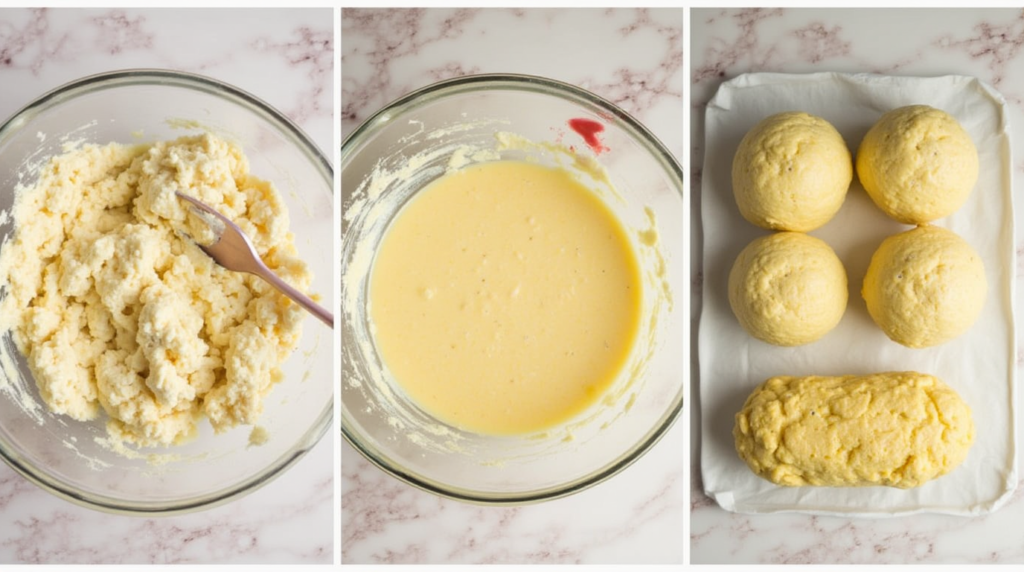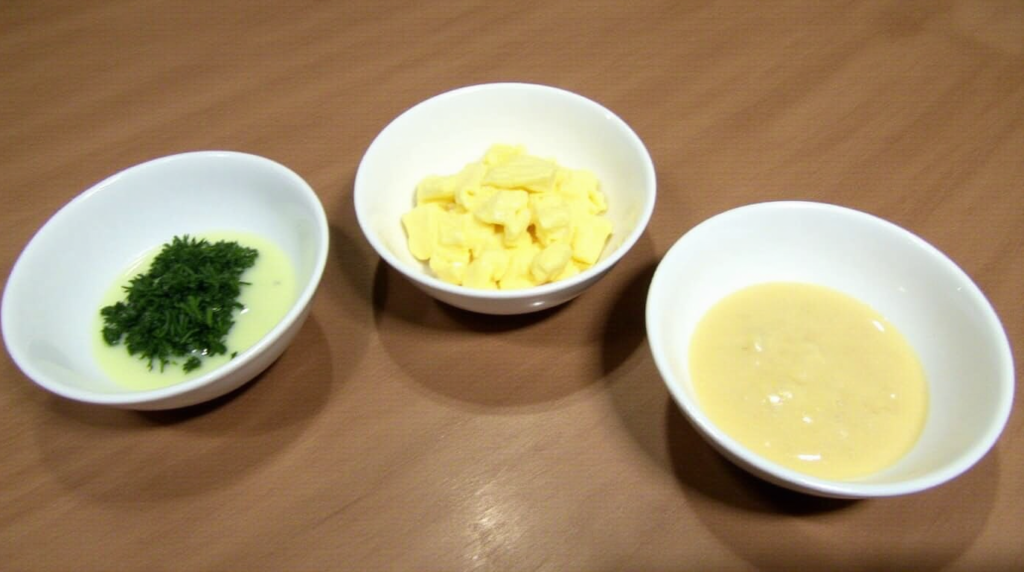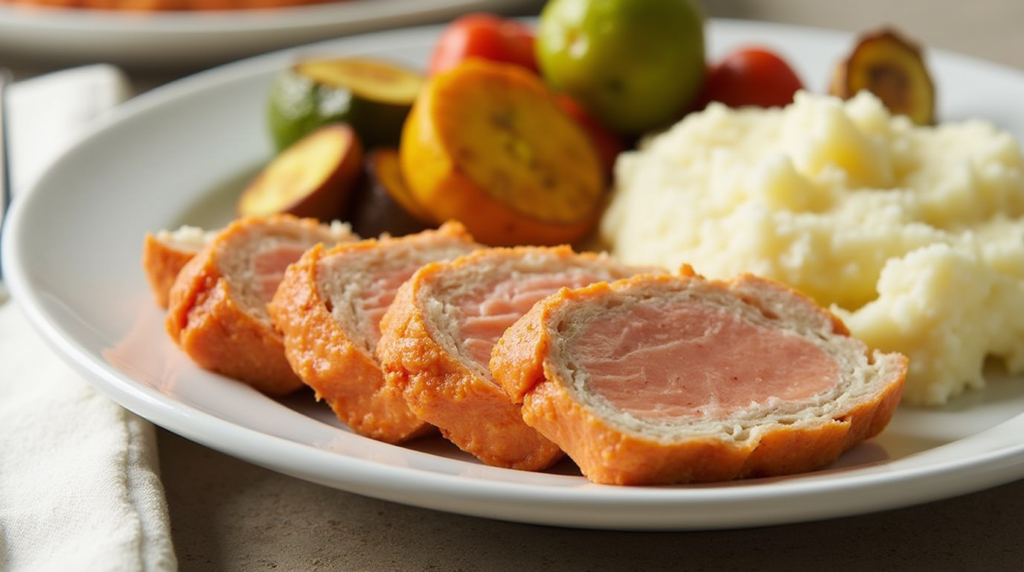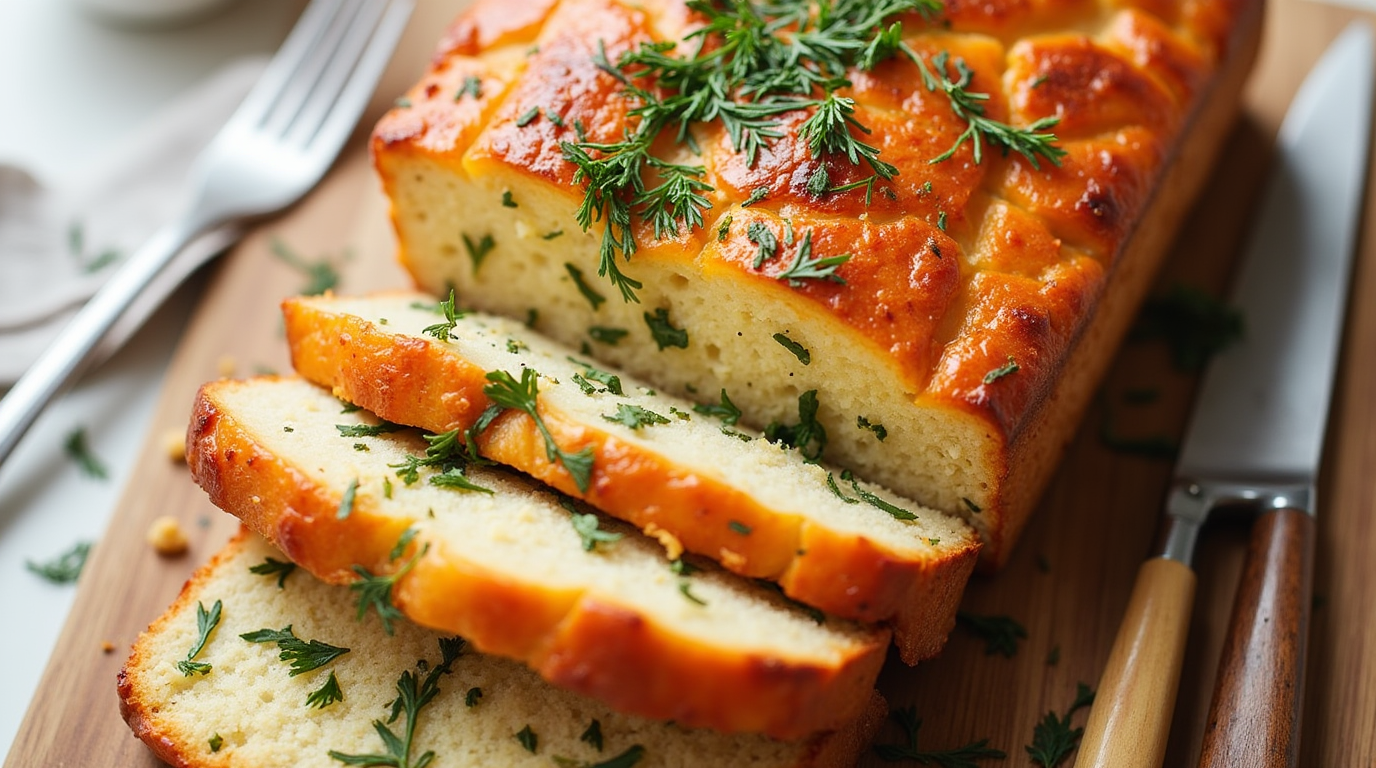Easy Salmon Loaf Recipe – Classic Comfort with a Healthy Twist
I’m excited to share my simple yet delicious baked salmon loaf recipe that’s perfect for a comforting yet nutritious meal. This dish is a great way to enjoy the benefits of salmon in a new and exciting way.
As someone who values healthy eating, I appreciate that this loaf recipe is not only tasty but also packed with nutrients. It’s an excellent option for a weeknight dinner or a special occasion.
Key Takeaways
- Easy to make and requires minimal ingredients
- A healthy twist on a classic comfort dish
- Perfect for a weeknight dinner or special occasion
- Packed with nutrients and protein
- Can be customized to suit your taste preferences
The Timeless Appeal of Salmon Loaf
For many, salmon loaf is more than just a meal; it’s a nostalgic reminder of home-cooked goodness passed down through generations. This dish has managed to stand the test of time, remaining a staple in American cuisine.
A Brief History of Salmon Loaf in American Cuisine
Salmon loaf has its roots in traditional American cooking, dating back to when resourcefulness in the kitchen was key. It originated as a creative way to use canned salmon, turning it into a satisfying meal. Over time, it became a comfort food classic, enjoyed across various households.
The evolution of salmon loaf was influenced by the availability of ingredients and the need for economical meal solutions. Its history reflects the adaptability and thriftiness of home cooks.
| Era | Influence on Salmon Loaf |
|---|---|
| Early 20th Century | Use of canned salmon became widespread, making salmon loaf a convenient meal option. |
| Mid-20th Century | The dish gained popularity as a comfort food, with various recipes emerging. |
| Late 20th Century | Salmon loaf continued to be a family favorite, with adaptations to suit changing tastes. |
Why Salmon Loaf Remains a Beloved Comfort Food
Salmon loaf remains a beloved comfort food due to its nostalgic appeal and the ease with which it can be prepared. It’s a dish that evokes memories of family dinners and home-cooked meals.
The versatility of salmon loaf is another reason for its enduring popularity. It can be served with a variety of sauces and sides, making it a flexible option for meal planning.
- It’s a comforting, familiar dish that brings people together.
- The recipe can be easily adapted to suit different tastes and dietary needs.
- It’s an economical meal option, using affordable ingredients.
Health Benefits of Making Salmon Loaf at Home
Making salmon loaf at home is not only a culinary delight, but it also offers numerous health benefits that make it a great addition to a balanced diet. By choosing to make salmon loaf recipe at home, you can control the ingredients and maximize the nutritional value of your meal.
Nutritional Profile of Salmon
Salmon is renowned for its exceptional nutritional profile, making it an excellent choice for a healthy diet. Let’s delve into some of its key nutritional benefits.
Omega-3 Fatty Acids and Heart Health
Salmon is rich in omega-3 fatty acids, particularly EPA and DHA, which are crucial for heart health. These fatty acids help reduce inflammation, lower triglycerides, and prevent blood clots, all of which contribute to a reduced risk of heart disease.
Protein Content and Other Essential Nutrients
Salmon is also an excellent source of protein, essential for muscle repair and growth. Additionally, it is rich in various vitamins and minerals, including vitamin D, selenium, and B vitamins, which play vital roles in energy production, immune function, and overall health.
Caloric Value Compared to Other Protein Sources
Compared to other protein sources, salmon loaf can be relatively low in calories, especially when prepared with minimal added fats. A serving of salmon loaf can range from 200 to 350 calories, making it a nutritious and filling option for those watching their caloric intake.
How This Recipe Balances Nutrition and Flavor
My salmon meatloaf recipes are designed to balance nutritional value with flavor, ensuring that you don’t have to compromise on taste for health benefits. By using fresh herbs, spices, and other wholesome ingredients, we can create a dish that is both nourishing and delicious.
- Use of fresh ingredients to maximize flavor and nutrition
- Careful selection of spices and herbs to enhance taste without adding extra salt or sugar
- Avoidance of unnecessary additives and preservatives
By making a few simple adjustments to traditional recipes, you can enjoy a salmon loaf that is not only healthy but also packed with flavor.
Essential Ingredients for My Salmon Loaf Recipe
My salmon loaf recipe relies on a few essential ingredients to deliver on flavor and nutrition. The right combination of salmon, binding ingredients, and seasonings is crucial for a delicious and satisfying dish.
Selecting the Best Salmon
The type of salmon you choose can significantly impact the flavor and texture of your salmon loaf. When deciding on salmon, you have several options to consider.
Fresh vs. Canned Salmon Options
Both fresh and canned salmon can be used for this recipe, each offering its own advantages. Fresh salmon provides a richer flavor, while canned salmon is more convenient and has a longer shelf life. If using canned salmon, look for wild-caught options to ensure the best flavor.
Wild-Caught vs. Farm-Raised Considerations
When it comes to choosing between wild-caught and farm-raised salmon, consider the nutritional differences and flavor profiles. Wild-caught salmon generally has a better fatty acid profile and more robust flavor, while farm-raised salmon can be more sustainable and affordable.
| Salmon Type | Flavor Profile | Nutritional Benefits |
|---|---|---|
| Wild-Caught Salmon | Robust, richer flavor | Higher omega-3 fatty acids, lower in saturated fats |
| Farm-Raised Salmon | Milder flavor | More sustainable, potentially higher in fat |
Key Binding Ingredients
The binding ingredients in my salmon loaf recipe, such as eggs and breadcrumbs, play a crucial role in holding the loaf together. These ingredients help to create a cohesive texture that is both moist and firm.
Herbs and Seasonings That Enhance Flavor
To enhance the flavor of the salmon loaf, I use a combination of herbs and seasonings, including dill, parsley, and lemon zest. These ingredients add a fresh and aromatic flavor that complements the salmon perfectly.
- Dill: Adds a bright, fresh flavor
- Parsley: Contributes a mild, herbal note
- Lemon Zest: Provides a citrusy, aromatic flavor
Kitchen Equipment You’ll Need
Preparing my salmon loaf recipe requires a few key kitchen tools. To ensure a smooth cooking process, it’s essential to have the right equipment.
Loaf Pan Options and Alternatives
A good-quality loaf pan is crucial for baking a salmon loaf. You can use a traditional metal loaf pan or opt for a non-stick version for easier cleanup. If you don’t have a loaf pan, you can also use a ceramic or glass baking dish as an alternative.
| Loaf Pan Type | Material | Benefits |
|---|---|---|
| Traditional | Metal | Even heating |
| Non-stick | Coated Metal | Easy food release |
| Ceramic Alternative | Ceramic | Aesthetic appeal |
Helpful Tools for Preparation
In addition to a loaf pan, you’ll need some basic kitchen tools. A mixing bowl, measuring cups, and a fork for mashing the salmon are essentials. A sharp knife for chopping herbs and a cutting board for preparing ingredients are also necessary.
- Mixing bowl
- Measuring cups
- Fork
- Sharp knife
- Cutting board
My Easy Salmon Loaf Recipe Step-by-Step
Making a delicious salmon loaf is easier than you think, and I’m here to guide you through it. This recipe is a straightforward process that involves preparation, mixing, forming the loaf, and baking.

Preparation Phase
The preparation phase is crucial for a successful salmon loaf. It involves preparing the salmon and other ingredients.
Preparing the Salmon
To start, you’ll need to prepare the salmon. This involves draining the liquid from the canned salmon and removing any large bones or skin. Use a fork to flake the salmon into smaller pieces, making it easier to mix with other ingredients.
Prepping Other Ingredients
Next, prepare the other ingredients, including finely chopping the onion and celery, and mincing the garlic. You can use a food processor to speed up this process. Also, crack the eggs into a bowl and beat them lightly.
Mixing and Forming the Loaf
Once all the ingredients are prepared, it’s time to mix them together. In a large bowl, combine the flaked salmon, chopped onion, celery, garlic, beaten eggs, and your choice of seasonings. Mix everything together until just combined; avoid overmixing. Then, transfer the mixture to a loaf pan or shape it into a loaf form if you’re using a baking sheet.
Baking Instructions and Timing
Preheat your oven to 350°F (175°C). Place the loaf pan or the shaped loaf on a baking sheet and bake for about 35-40 minutes, or until the loaf is firm to the touch and lightly browned on top. You can check for doneness by inserting a knife or toothpick into the center; it should come out clean.
| Ingredient | Quantity | Preparation |
|---|---|---|
| Canned Salmon | 1 can (14.75 oz) | Drain liquid, remove bones/skin, flake |
| Onion | 1/2 cup | Finely chopped |
| Celery | 1/2 cup | Finely chopped |
| Garlic | 2 cloves | Mince |
| Eggs | 2 | Beaten lightly |
Troubleshooting Common Salmon Loaf Problems
Despite its simplicity, salmon loaf can sometimes be dry, fall apart, or lack flavor if not prepared correctly. In this section, I’ll address some common issues that may arise and provide practical solutions to help you achieve a delicious outcome.
Preventing a Dry Salmon Loaf
A dry salmon loaf can be disappointing. To prevent this, ensure you’re not overmixing the ingredients, as this can cause the loaf to become dense and dry. Additionally, be mindful of the cooking time and temperature; overcooking is a common cause of dryness. Using a moderate oven temperature and checking the loaf frequently towards the end of the cooking time can help.
Solutions for Loaves That Don’t Hold Together
If your salmon loaf doesn’t hold together, it might be due to insufficient binding ingredients. Ensure you’re using enough eggs and breadcrumbs, as these help to bind the mixture. Also, avoid over-processing the salmon, as this can break down the proteins and cause the loaf to fall apart.
Adjusting Flavors and Seasonings
The flavor of your salmon loaf can be adjusted by tweaking the seasonings. If it tastes too bland, consider adding more herbs or spices. For a stronger flavor, you can also increase the amount of onion, garlic, or other aromatics. Taste the mixture before baking and adjust the seasoning accordingly.
Delicious Sauce Pairings for Salmon Loaf
Discover the art of pairing salmon loaf with delicious sauces that enhance its flavor. The right sauce can elevate the dining experience, complementing the salmon’s rich taste with a tangy, creamy, or zesty note.

Classic Dill Sauce Recipe
A classic dill sauce is a timeless accompaniment to salmon loaf, offering a refreshing contrast to the richness of the fish. To make it, combine 1/2 cup sour cream, 1 tablespoon chopped fresh dill, 1 tablespoon lemon juice, and a pinch of salt in a bowl. Mix well and refrigerate for at least 30 minutes to allow the flavors to meld. This sauce is not only delicious but also easy to prepare, making it a perfect pairing for your salmon meatloaf recipes.
Lemon Butter Sauce Option
For those who prefer a richer sauce, a lemon butter sauce is an excellent choice. Melt 2 tablespoons butter in a saucepan over medium heat. Add 2 cloves minced garlic and cook until fragrant. Then, stir in 2 tablespoons freshly squeezed lemon juice and 1 tablespoon chopped parsley. This sauce adds a bright, citrusy flavor that complements the salmon beautifully.
Creamy Dijon Sauce Alternative
If you’re looking for a creamy sauce with a bit of tang, consider a creamy Dijon sauce. Mix 1/2 cup mayonnaise, 2 tablespoons Dijon mustard, and 1 tablespoon chopped chives in a bowl. This sauce offers a rich, creamy texture with a subtle kick from the Dijon mustard, making it a delightful accompaniment to your salmon loaf.
These sauce pairings not only enhance the flavor of your salmon loaf but also add a creative twist to your meal. Experiment with different sauces to find your favorite way to enjoy salmon meatloaf recipes.
Creative Variations on the Basic Salmon Loaf Recipe
Transform your salmon loaf into a culinary masterpiece with these creative variations. The versatility of salmon loaf allows for numerous adaptations to suit different tastes and dietary needs. Here, we’ll explore three exciting variations that can elevate your old fashioned salmon loaf recipe.
Mediterranean-Inspired Salmon Loaf
Infuse your salmon loaf with the flavors of the Mediterranean by incorporating ingredients like feta cheese, Kalamata olives, and sun-dried tomatoes. Add a sprinkle of oregano and a squeeze of fresh lemon juice to give it an authentic touch. This variation is perfect for those who enjoy bold, savory flavors.
- Feta cheese for a tangy, salty flavor
- Kalamata olives for a salty, umami taste
- Sun-dried tomatoes for a burst of Mediterranean sunshine
Spicy Cajun Twist
For those who like a bit of heat, a Spicy Cajun Twist can add an exciting dimension to your salmon loaf. Mix in Cajun seasoning, diced jalapeños, and a sprinkle of paprika to give your loaf a spicy kick. This variation is ideal for adventurous eaters looking to spice up their meal.
- Cajun seasoning for a bold, spicy flavor
- Diced jalapeños for an extra kick
- Paprika for a smoky depth
Gluten-Free and Dairy-Free Adaptations
For individuals with dietary restrictions, it’s easy to adapt the salmon loaf recipe to be gluten-free and dairy-free. Use gluten-free breadcrumbs and replace traditional milk with almond or soy milk. You can also substitute dairy-based cheese with vegan alternatives. This way, everyone can enjoy a delicious salmon loaf.
- Gluten-free breadcrumbs for a gluten-free option
- Almond or soy milk as dairy-free alternatives
- Vegan cheese for a dairy-free version
These creative variations demonstrate the flexibility of the old fashioned salmon loaf recipe, allowing you to experiment with new flavors and cater to different dietary needs. Whether you’re in the mood for something Mediterranean, spicy, or adapted to specific dietary requirements, there’s a salmon loaf variation for everyone.
Perfect Side Dishes to Serve with Salmon Loaf
When serving salmon loaf, choosing the right side dishes can elevate the meal. Salmon loaf, a staple in many salmon loaf recipes, is a dish that can be complemented by a variety of flavors and textures.

Vegetable Sides That Complement Salmon
Vegetables are a natural pairing with salmon loaf, offering a contrast in texture and flavor. Some excellent options include:
Green Vegetable Options
- Steamed broccoli
- Sauteed spinach
- Green beans almandine
Colorful Roasted Vegetable Medleys
Roasting brings out the natural sweetness in vegetables, which complements the savory flavor of salmon loaf. Consider a medley of:
- Carrots
- Brussels sprouts
- Bell peppers
Starch Options to Complete the Meal
To make the meal more filling, starches are a great addition. They pair well with baked salmon loaf, providing a satisfying contrast.
Traditional Potato Sides
| Potato Dish | Description |
|---|---|
| Mashed Potatoes | Comforting and creamy |
| Roasted Potato Wedges | Crunchy on the outside, fluffy within |
Grain and Rice Alternatives
For a lighter option, consider grains or rice:
- Quinoa salad
- Brown rice pilaf
- Herbed couscous
Storing and Reheating Your Old Fashioned Salmon Loaf Recipe
To enjoy your salmon loaf at its best, even after the initial meal, it’s crucial to store and reheat it properly. This ensures that the flavors and texture are preserved.
Refrigeration Guidelines
After cooking, let the loaf cool completely. Then, wrap it tightly in plastic wrap or aluminum foil. It can be refrigerated for up to three days.
Freezing Instructions
For longer storage, wrap the cooled loaf securely and place it in a freezer-safe bag. It can be frozen for up to three months. Thaw overnight in the refrigerator when needed.
Best Methods for Reheating
Reheat the salmon loaf in the oven at 350°F (175°C), covered with foil, until heated through. This method retains moisture. Alternatively, reheat slices in the microwave, but avoid overheating.
Conclusion: Why This Salmon Loaf Recipe Deserves a Place in Your Meal Rotation
My easy salmon loaf recipe offers a delicious, healthy twist on a classic comfort food dish. By incorporating fresh salmon, herbs, and spices, this old fashioned salmon loaf recipe provides a nutritious meal option that’s perfect for any night of the week.
This salmon loaf recipe stands out for its ease of preparation, making it accessible to cooks of all skill levels. The dish is also highly versatile, allowing for various adaptations and pairings to suit different tastes and dietary needs.
By making this salmon loaf recipe a regular part of your meal rotation, you’ll enjoy a consistent source of protein, omega-3 fatty acids, and other essential nutrients. I encourage you to give this recipe a try and experience the benefits of a home-cooked salmon loaf for yourself.
FAQ
What are some variations of salmon loaf recipes I can try?
You can experiment with different flavors and ingredients, such as Mediterranean-inspired salmon loaf with feta and olives, or a spicy Cajun twist with hot sauce and seasonings. You can also adapt the recipe to be gluten-free or dairy-free.
Can I use canned salmon for my salmon loaf recipe?
Yes, canned salmon is a convenient and affordable option for salmon loaf. Just be sure to drain the liquid and pat the salmon dry before using it in your recipe.
How do I prevent my salmon loaf from becoming dry?
To prevent dryness, make sure not to overmix the ingredients, and avoid overbaking. You can also add moisture-rich ingredients like mayonnaise or Greek yogurt to help keep the loaf moist.
What are some good sauce pairings for salmon loaf?
Some popular sauce options for salmon loaf include a classic dill sauce, lemon butter sauce, and creamy Dijon sauce. You can also experiment with other flavors like tartar sauce or a simple vinaigrette.
Can I freeze salmon loaf, and if so, how do I reheat it?
Yes, you can freeze salmon loaf. To reheat, simply thaw it overnight in the refrigerator, then bake it in the oven at 350°F (175°C) until warmed through. You can also reheat it in the microwave, but be careful not to overheat.
What are some good side dishes to serve with salmon loaf?
Some tasty options include roasted vegetables like asparagus or Brussels sprouts, mashed potatoes, or a simple green salad. You can also serve it with grains like quinoa or brown rice for a filling meal.
How do I make a baked salmon loaf?
To make a baked salmon loaf, simply shape the salmon mixture into a loaf and place it in a loaf pan or on a baking sheet. Bake it in a preheated oven at 375°F (190°C) for about 35-40 minutes, or until cooked through and lightly browned on top.
Leave a Review & Rate This Recipe!
There are no reviews yet. Be the first one to write one.

